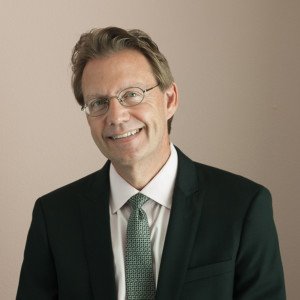Ben Childers, MD, FACS, is a Board Certified Plastic Surgeon, a Fellow of the American College of Surgeons, and a member of the American Society of Plastic Surgeons. He practices at and is the owner of Riverside Plastic Surge ry Associates, Inc. in Riverside, California. He also owns Sheer Beauty Medical Skin Care boutiques in Upland and Redlands, California. With eight years of training at Harvard Medical School and Loma Linda University and twenty years of experience, he has completed over 25,000 procedures. Aesthetic Everything and Beautywire Magazine recently named Dr. Childers as one of the Top 10 Aesthetic Doctors in America as well as one of the Top 10 Plastic Surgeons in the West.
ry Associates, Inc. in Riverside, California. He also owns Sheer Beauty Medical Skin Care boutiques in Upland and Redlands, California. With eight years of training at Harvard Medical School and Loma Linda University and twenty years of experience, he has completed over 25,000 procedures. Aesthetic Everything and Beautywire Magazine recently named Dr. Childers as one of the Top 10 Aesthetic Doctors in America as well as one of the Top 10 Plastic Surgeons in the West.
Dr. Childers is the author of the Bestselling Book, “Guide To Breast Reconstruction After Mastectomy: What To Do After You Are Diagnosed”. In this interview for BIM with Bill Kopatich, he discusses some of the first steps that women who have been diagnosed with breast cancer should take and the current best practices in reconstruction of the breasts after mastectomy.
Bill: When a woman is diagnosed with breast cancer, there is likely stress and anxiety. What are some of the first things she should do at that point?
Dr. Childers: Typically when a woman has been diagnosed with breast cancer, she’ll be called by the doctor to come in and go over some pathological results. There may be some tests that need to be done, but once she gets the diagnosis, then there are several things that go through her mind. Much of the time patients will wonder if they’re going to die. They may panic at first, but usually after they get over that, the surgeon describes the recommend treatments, whether it’s going to be radiation or chemotherapy or surgery. The next thing that they usually think of is, “How am I going to look after the procedures that are planned?”
One of the first things a woman needs to do, after she gets the diagnosis, is go see a plastic surgeon, because the plastic surgeon can give a broad overview of what can be done to reestablish appearance after the mastectomy or other procedures. The plastic surgeon will work with the general surgeon and the radiation oncologist. If not automatically referred to a plastic surgeon, the patient should seek consultation with a plastic surgeon to make sure she understands the options related to her long-term appearance.
I see a number of patients that come in and they are in tears because they’ve been diagnosed with cancer. They’re going to lose their breast and they have no idea what they’re going to look like. Once we get through with talking about some reconstruction options, they leave the office feeling much better about what’s going to happen. Then they can go to their general surgeon and consider their options.
Bill: In a general sense, what is meant by breast reconstruction?
Dr. Childers: Breast reconstruction in its simplest sense is restoring the form of the breast. We’re giving a patient her breast back. Reconstruction involves either reconstructing one breast and then matching it with the opposite breast or reconstructing both breasts to give natural form.
Function generally is difficult to restore. Once a patient has had a mastectomy, she’s not going to be able to produce milk, because the nipple-areolar complex is gone. In some instances, the general surgeon may choose to spare the nipple-areolar complex. This is done on a case-by-case basis; however, milk production in that instance is not possible.
Bill: With the technologies available today, is it possible for a woman to regain her figure after a mastectomy and breast reconstruction?
Dr. Childers: The answer is yes, with the clarifier that it’s based on the figure or physique the patient is starting with. If we start with a figure that is easier to reconstruct, we can end up with a better result most of the time. Sometimes we even enhance the figure from the perspective of the patient. We’ve had patients that had small breasts before the cancer and in the course of the reconstruction they decided they would like to have larger breasts, with a fuller look, and we were able to accomplish that during the reconstruction.
Bill: Who are good candidates for breast reconstruction?
Dr. Childers: Most patients that have breast cancer and will be having breast surgery are candidates for reconstructive surgery. Going to the plastic surgeon, upon initial diagnosis is a good place to start. The plastic surgeon can look at the type of cancer they have and will work with the oncologist to understand the treatment plan. By and large, most patients are candidates for reconstruction, but it needs to be discussed and the patient has to be evaluated to determine what type of reconstruction they can have.
Bill: Are breast implants always used for breast reconstruction or are there other alternatives?
Dr. Childers: Either breast implants are used or alternatively we can use body tissue from the patient. There are patients that don’t want an implant; they would like to use their own body tissue. That’s possible in women who have some excess fat in the lower abdomen or back that we can use to reconstruct the breast. There has to be enough tissue that we can remove and still close the patient to be able to do that procedure.

